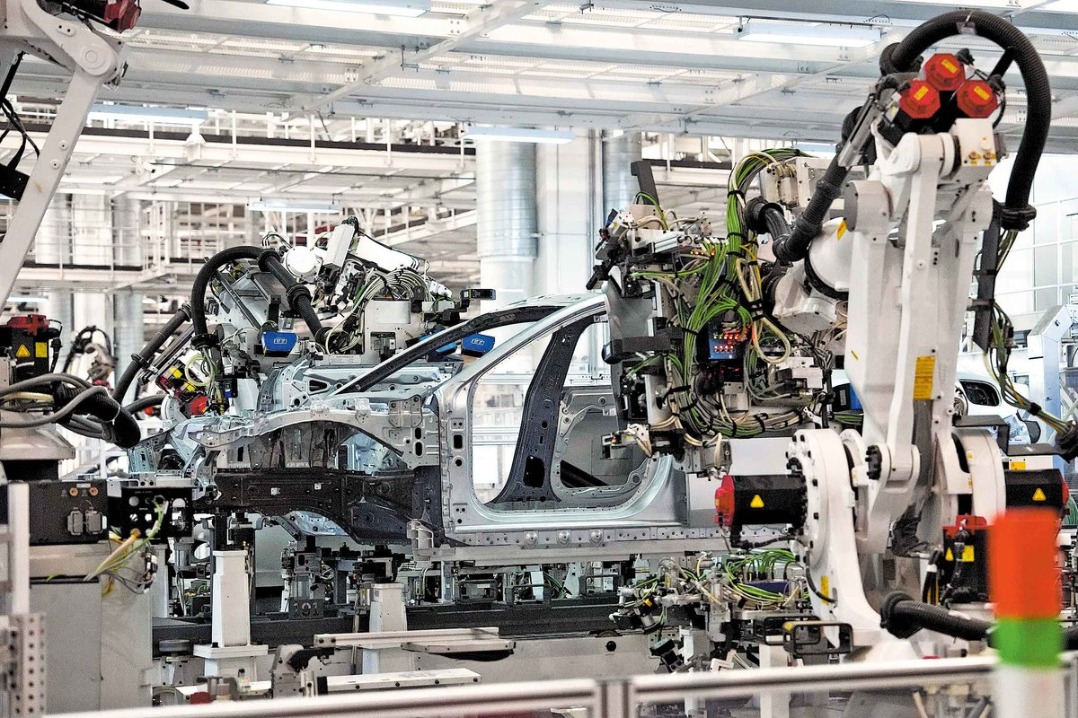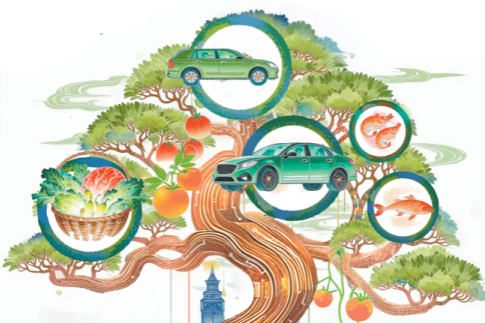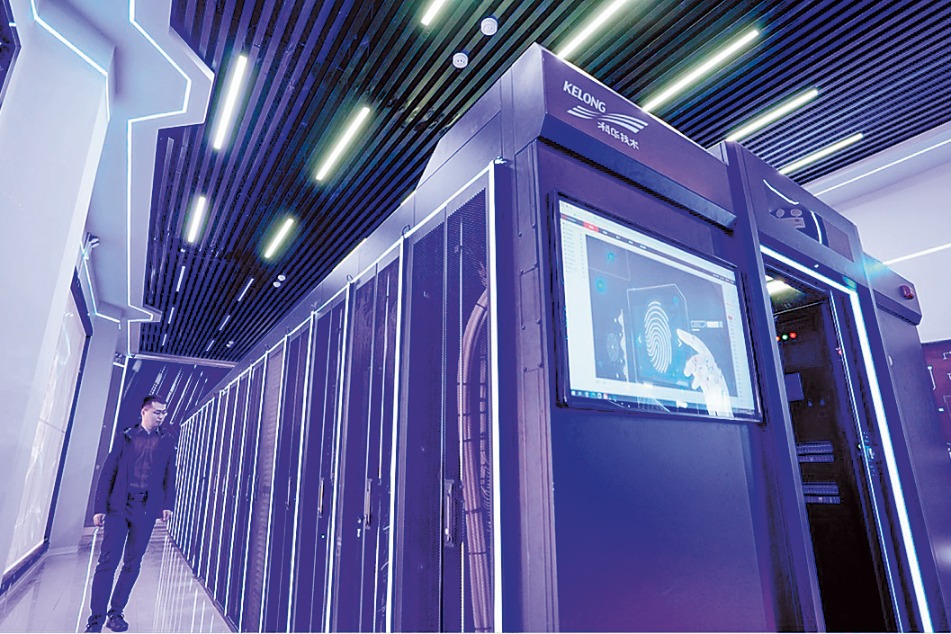BRI chain a road to integration


Editor's note: As the world's first national-level exhibition focusing on supply chains, the China International Supply Chain Expo will gather industry leaders from around the world and help promote global cooperation in industrial and supply chains, while providing an important platform to explore the advancements in supply chain management and connect with global industry leaders. Four experts share their views with China Daily.
Over the past decade, the Belt and Road Initiative has evolved from an ambitious vision of physical connectivity into a vast and dynamic architecture of global trade and industrial cooperation. In its early years, the initiative was largely defined by infrastructure megaprojects such as railways, ports, highways, and energy corridors that physically linked regions across Asia, Europe, Africa and beyond. Today, the initiative is entering a new phase, where the emphasis is no longer only on where the roads go, but on how those routes enable deeper functional integration among industries, markets and digital systems.
The third China International Supply Chain Expo, to be held from July 16 to 20 in Beijing, offers a timely lens to understand this transition. As China shifts its BRI policy from "building to blending", the expo stands out as a platform for connecting global industry and supply chain enterprises. It is not just a venue for display, but for coordination across increasingly interdependent value chains.
Infrastructure has laid a groundwork as a catalyst. The first decade of the BRI laid the physical foundations for trade expansion. The China-Europe Railway Express connected over 100 cities, slashing delivery time across Eurasia. Maritime investments revitalized ports such as Piraeus in Greece and Gwadar in Pakistan, while road corridors like the China-Pakistan Economic Corridor opened up previously underdeveloped regions. These projects reduced transport costs, enhanced logistics predictability and brought strategic visibility to routes once overlooked by global supply chains.
But infrastructure alone is no longer sufficient. To harness the gains of these routes, what matters now is the integration of logistics systems, industrial clusters, financial flows and regulatory frameworks.
The BRI faces growing challenges in achieving seamless integration. Geopolitical risks, military conflicts, sanctions and techno-protectionism impact energy and raw material supplies, technologies and transport routes. The Ukraine conflict and Israel-Iran frictions have disrupted energy markets and trade flows. The US restrictions on chip exports reflects techno-nationalism trends.
Regulatory misalignment complicates coordination, while divergent customs rules and conflicting data laws delay operations and raise compliance costs. In Central Asia, rail gauge incompatibility still requires costly transshipment.
Trust deficits also persist. Perceptions of BRI projects as "debt traps" or environmentally harmful have undermined local support, as seen in Myanmar's Kyaukpyu Port renegotiation.
The next phase of the BRI requires adaptive governance, local participation, mutual legal recognition and digital interoperability.
The BRI's new focus is on integration across logistics, industrial, digital and financial domains. In logistics, multimodal transport platforms now link sea, rail, and air. Smart customs solutions and electronic clearance systems are streamlining cross-border movement. Smart corridors like the China-Kazakhstan "Single Window" have reduced border processing time greatly.
Digital integration is another transformative frontier. Initiatives under the Digital Silk Road promote e-commerce, blockchain-based trade finance and AI-enabled freight optimization. Pilot projects by HSBC have reduced the time taken for letter-of-credit issuance.
Financial integration is improving liquidity and reducing risk. The Silk Road Fund's $40 billion portfolio offers de-risking tools to insure projects against currency volatility.
This integration facilitates not only trade, but value creation. Regional supply chains are gradually transforming into value-adding industrial ecosystems, anchored by connectivity, but driven by coordination.
China and its partners are responding with institutional and technological solutions. Forums like CISCE now showcase not only governance models but also cutting-edge technologies that strengthen supply chain resilience. Emerging digital tools, such as Big Data analytics, internet of things systems, artificial intelligence, and predictive modeling, are being deployed to anticipate potential disruptions, optimize freight routes, monitor real-time cargo status and support dynamic risk assessment. For instance, AI-powered logistics algorithms reduce the rate of empty container returns, while IoT sensors monitor goods in transit, enabling timely interventions. These innovations, when integrated with smart logistics platforms and adaptive infrastructure design, make regional networks more agile in the face of geopolitical and economic uncertainty.
The CISCE also serves as a demonstration stage for collaborative legal and institutional frameworks aimed at increasing interoperability.
As participants share successful cross-border solutions in areas such as digital customs clearance, data compliance, and logistics insurance, a new layer of mutual trust and predictability is being established.
These joint efforts help not only to mitigate shocks, but also to build proactive mechanisms for continuity and sustainable cooperation. Integrating smart logistics, resilient design and legal frameworks strengthens adaptability and transparency.
China's global trade commitment is clear in its international platforms. The China International Import Expo, launched in 2018, has become one of the world's largest import fairs. The Belt and Road Forum for International Cooperation is a key diplomatic anchor. Signed contracts and deal values have steadily risen.
The China International Supply Chain Expo, launched in 2023, focuses specifically on strengthening and integrating global supply chains. Unlike general expos, it connects logistics providers, manufacturers, financial firms and regulators.
The 2025 CISCE covers six key industry chains and one crosscutting area, highlighting innovation and integrates finance, logistics and legal support.
The CISCE's first two editions generated trade deals worth over $42 billion. Major corporations, including Amazon, Apple, Intel, ExxonMobil, Tesla, Qualcomm, Honeywell, and GE HealthCare participated, demonstrating broad international engagement.
The BRI is no longer about physical presence. It is about performance: resilience, integration, and shared prosperity. The infrastructure is in place; the next step is building bridges of cooperation across logistics, digital platforms, finance and industry.
But geopolitical fragmentation, regulatory divergence, and trust deficits continue to challenge cohesion. China's response, integrated strategies and platforms like the CISCE are transforming the BRI into a collaborative industrial ecosystem.
As global trade becomes more volatile, the BRI's future depends on evolving from a network of projects into an ecosystem of partnerships. Platforms like the CISCE will be vital, linking not just goods, but goals and strategies as well.
The author is a senior research fellow at the Institute of International Politics and Economics, Serbia.
The views don't necessarily reflect those of China Daily.
If you have a specific expertise, or would like to share your thought about our stories, then send us your writings at opinion@chinadaily.com.cn, and comment@chinadaily.com.cn.


































